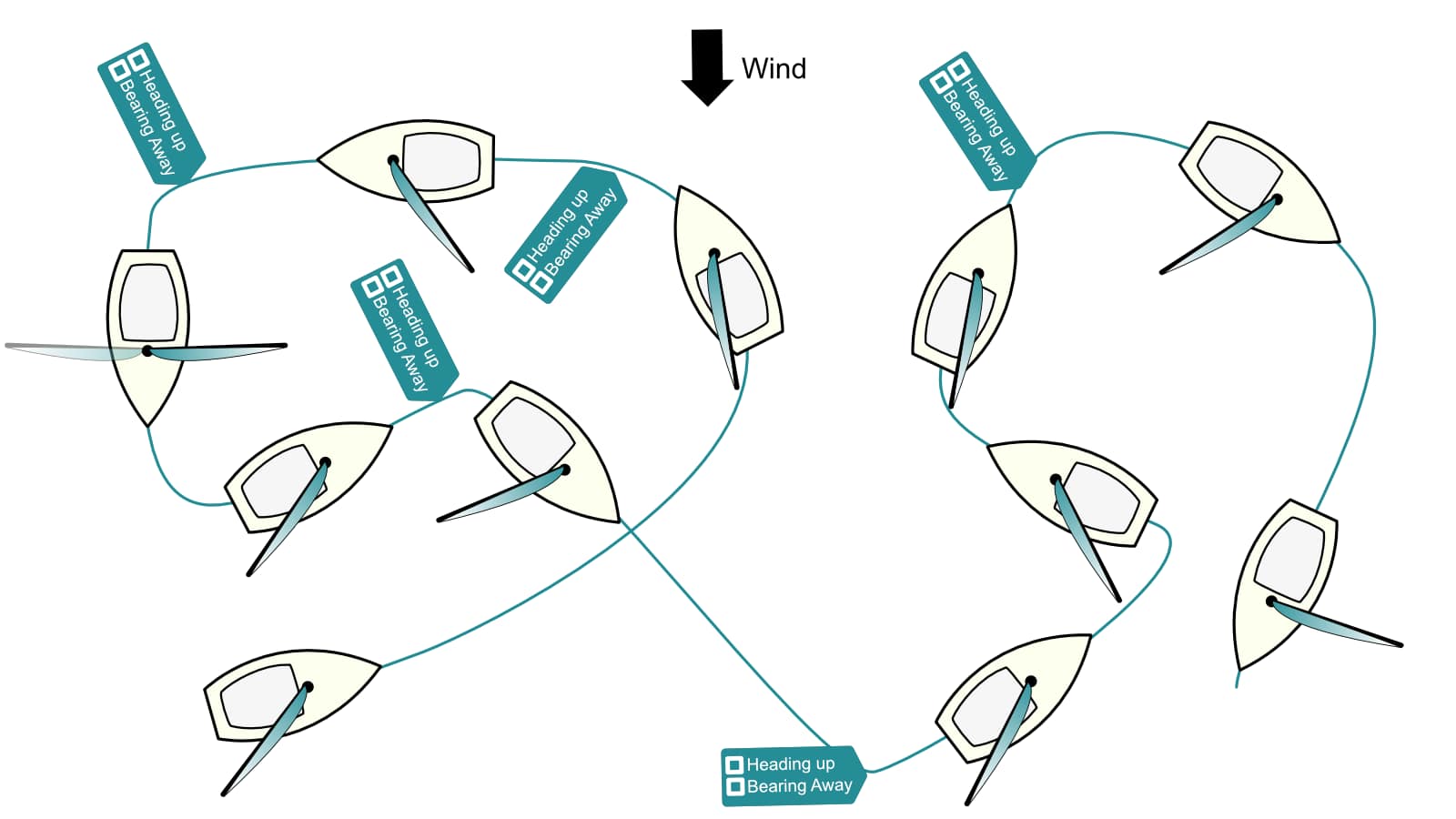Here’s a recording of what happened in the third Virtual Training session:
Here’s the points of sail exercise if you want to do it yourself…

…and here it is with the answers.
Sailing is all about the wind and you have to think about it all the time – even before you put your boat on the water! What sort of things do you need to think about then? Well,
- How strong is it?
- What direction is it coming from?
- Are there any gusts and how strong are they and are they coming from a different direction?
Once you get used to sailing a bit you might also think about whether the wind is different on different parts of the lake (It usually is at Yeadon!) and whether other objects round the lake (and even other boats) are affecting the wind.
This session is all about the direction the wind is coming from compared to the direction the boat is sailing in, and it’s really important to think about this all the time you are sailing so you can get the best out of the boat. The more you sail the more you will get used to constantly adjusting the sail position (By pulling in the big rope or letting it go a bit) to get the best speed and stay in full control.
As always, sailors use lots of odd names for things and the direction that the boat is going compared to the wind is no different. There are two terms that are really useful to remember:
- On a ‘Run‘ – This means you are sailing with the wind blowing from behind the boat, so imagine that you are ‘Running Away‘ from the wind.
- ‘Close Hauled‘ – This is when the boat is sailing as close as possible to going straight into the wind without stopping. The wind will be blowing in your face (and the sail will be as close as possible to you!).
Two other terms that you will become familiar with are:
- ‘In Irons‘ or ‘Head to wind‘ – This is what you don’t want as it means the boat is pointing directly into the wind and you are not going anywhere! This will happen quite a lot while you are training 😉.
- Reaching – this is when you are sailing with the wind coming straight over the side of the boat and it is often the fastest direction you can sail in. Imagine that you stand facing forward in the boat and stretch out your arms sideways to ‘Reach‘ towards the wind.
There are two other terms that are really useful to get used to, because people might use them when telling you which direction to point your boat. Remember, we’re always sailing based on the direction of the wind so we will often need to turn a bit one way of the other to get more (or less) wind. So people will talk about:
- Bearing ‘Away’ – This means turning away from the wind a bit so the wind is blowing more from behind you (So, if the wind is blowing from your right you will bear away to the left, or vice versa). Note that, when you ‘Bear Away’ the boat usually speeds up.
- Heading ‘Up’ – This is the opposite and means turning to point your boat more into the wind. (We might talk about going ‘Upwind’ which means sailing into the wind – remember that going upstairs is more difficult than coming downstairs, and going upwind is the same!). ‘Heading up’ will usually slow the boat down (If you remember, we talked about doing this in session 1 -now you know the technical term for it).